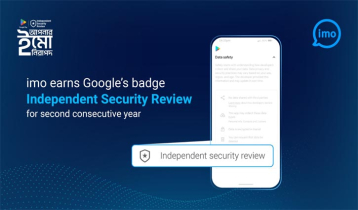Escalating threat of AI-powered cyber attacks and strategies for
Rafsani Rohan || risingbd.com

Artificial Intelligence (AI) is revolutionizing the digital world, offering advancements that were once the realm of science fiction.
However, it’s also becoming a double-edged sword. While AI helps enhance cyber security defenses, it’s also being used as a weapon by cybercriminals to conduct more sophisticated and effective attacks.
AI-powered cyber threats can easily bypass traditional security measures, making them more dangerous than ever. This article demonstrates how AI is being used in cyber attacks and the best strategies to defend against them.
How AI is Used in Cyber Attacks
1. AI-Enhanced Phishing Attacks: Phishing has always been a major cyber threat, but in today’s world, AI has made it more dangerous. Traditional phishing emails often contain grammatical errors or generic messaging, making them easier to detect. However, AI-powered phishing campaigns use machine learning to observe a target’s social media, emails, and online activities to craft highly personalized emails. These AI-generated emails are indistinguishable from legitimate communications.
Incident: According to news.com.au, in 2023, cyber criminals exploited artificial intelligence to conduct sophisticated phishing attacks, notably targeting the travel industry. They used AI to create convincing fake booking emails that mimicked legitimate communications from reputable companies like Booking.com. This led to a significant increase in travel-related scams, with Australians losing over $337,000 in that year alone.
2. AI-Driven Malware and Ransomware: AI enables malware to adapt and evolve, making detection and mitigation more challenging. This intelligent malware can learn from the environment, modify it’s behavior to avoid detection, and even identify high-value targets within a network.
Incident: According to The Hacker News, in January 2025, the AI-driven ransomware FunkSec attacked over 85 organizations worldwide, using AI to automate attacks and optimize ransom demands. They used double extortion tactics, encrypting data while threatening to leak sensitive information if the ransom wasn’t paid.
3. Deepfake Impersonations: The emergence of deepfake technology has introduced a new way for cyber attacks. By creating realistic audio and video impersonations, attackers can deceive individuals into exposing sensitive information or authorizing fraudulent transactions.
Incident: According to India Today, in November 2023, scammers used deepfake technology to impersonate a retired police officer, blackmailing a 74-year-old man into paying $1,000 by threatening him with fake charges.
4. AI-Powered Botnets and DDoS Attacks: AI has enhanced the capabilities of botnets—networks of compromised computers used to launch large-scale Distributed Denial of Service (DDoS) attacks. These botnets can adapt their strategies in real time, making mitigation more complex.
Incident: According to the World Economic Forum, in May 2024, the FBI dismantled a global botnet that had infected millions of computers across nearly 200 countries. This botnet facilitated numerous cybercrimes, including financial scams, identity theft, bomb threats, and access to child exploitation materials.
Government and Policymaker Responses
As cyber threats continue to evolve, governments and policymakers around the world have been ramping up their efforts to mitigate the growing risks posed by AI-powered cyber attacks.
1. Regulatory Frameworks and Policies: Governments are developing regulations to ensure the responsible use of AI and to protect against its malicious applications.
European Union (EU): The EU is advancing the Artificial Intelligence Act, aiming to establish comprehensive guidelines for AI development and deployment, including stringent requirements for high-risk AI systems.
United States: The Cyber Security and Infrastructure Security Agency (CISA) has outlined efforts to integrate AI considerations into federal cyber security strategies, emphasizing the need for trustworthy AI in government operations.
2. International Collaboration: Cyber threats are borderless, prompting international cooperation to combat AI-driven cybercrime. Agencies like Europol are collaborating with global partners to share intelligence, coordinate responses, and develop unified strategies against these evolving threats.
3. Investment in AI Research and Development: Governments are investing in AI research to stay ahead of cybercriminals. This includes funding for developing AI tools capable of detecting and countering AI-driven attacks, as well as fostering public-private partnerships to leverage industry expertise.
Defensive Strategies for Organizations
Organizations must adopt proactive measures to defend against AI-powered cyber threats.
1. Implementation of AI-Based Security Solutions: Leveraging AI for defense involves deploying systems that can detect anomalies, predict potential threats, and respond in real-time. These AI-driven security solutions can analyze vast amounts of data to identify patterns indicative of cyber threats.
2. Adoption of a Zero Trust Security Model: The Zero Trust model operates on the principle that no entity, internal or external, should be automatically trusted. Continuous verification and strict access controls are enforced to minimize potential attacks.
3. Continuous Employee Training: Human error remains a significant vulnerability. Regular training programs can educate employees about the latest phishing techniques, the dangers of deepfakes, and best practices for maintaining cyber security hygiene.
Protective Measures for the General Public
Individuals also play a crucial role in the cyber security ecosystem. By adopting certain practices, the general public can mitigate the risks posed by AI-driven cyber threats.
1. Vigilance Against Phishing Attempts: Being cautious of unsolicited communications and verifying the authenticity of requests can prevent falling victim to phishing scams.
2. Utilization of Strong, Unique Passwords: Employing complex passwords and changing them regularly reduces the risk of unauthorized access. Using password managers can assist in maintaining unique credentials across multiple platforms.
3. Awareness of Deepfake Technology: Understanding that audio and video can be manipulated is essential. Being skeptical of unexpected requests, especially those involving financial transactions or sensitive information, is prudent.
Conclusion
Cyber security is no longer just about firewalls and antivirus software—it’s about adapting to a world where AI is both the strongest defense and the most powerful weapon. As the saying goes, "To fight AI, you need AI." The future of cyber security depends on our ability to harness technology for defense as effectively as attackers use it for offense.
The writer is a student
Hasan/Mukul























